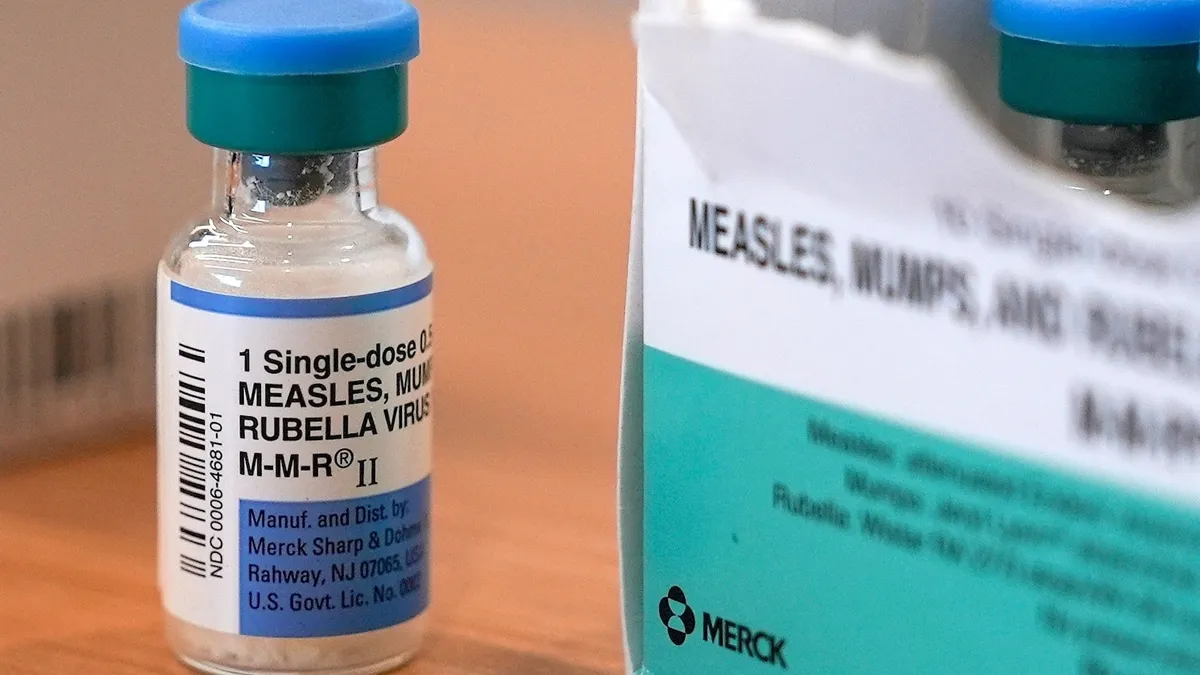
Recent reports indicate that measles cases are continuing to surge throughout the United States, with outbreaks confirmed in at least six states. Public health experts have identified lagging vaccination rates as a significant factor contributing to this resurgence. This decline is largely attributed to vaccine hesitancy and vaccine fatigue, remnants of the widespread health concerns stemming from the COVID-19 pandemic. However, new research highlights that even a slight increase in the administration of the MMR vaccine (which protects against measles, mumps, and rubella) could significantly reduce the number of infections.
A recent study published in the Journal of the American Medical Association (JAMA) utilized a model to simulate the transmission of vaccine-preventable infectious diseases across the U.S. over a span of 25 years. The research examined various scenarios based on different vaccination rates. The findings revealed that if current vaccination rates persist, measles could revert to being endemic in the U.S., potentially leading to an estimated 851,300 cases over the next 25 years. Alarmingly, if vaccination rates were to drop by just 10%, the model predicts that there could be 11.1 million cases of measles in the same period.
The Centers for Disease Control and Prevention (CDC) recommends that children receive two doses of the MMR vaccine—the first between 12 to 15 months and the second between 4 and 6 years old. According to the CDC, one dose is 93% effective, while two doses increase efficacy to 97% against measles. However, recent data shows that during the 2023-2024 school year, only 92.7% of kindergartners received the MMR vaccine, a decline from 93.1% in the previous year and significantly lower than the 95.2% recorded during the 2019-2020 school year. This trend highlights a concerning decrease in vaccination rates.
Dr. Nathan Lo, one of the study's co-authors and an infectious diseases physician at Stanford Medicine, expressed surprise at the findings, noting that the U.S. is at a critical juncture concerning measles outbreaks. He emphasized that the study's results indicate that unless vaccination levels improve, measles could once again become a common disease in American households. Dr. William Schaffner, a professor of preventive medicine at Vanderbilt University Medical Center, also commented on the study, stating that while the findings represent a worst-case scenario, they are nonetheless alarming. He pointed out that although the overall vaccination rate remains high, certain areas have significantly lower rates, which poses a risk for outbreaks.
The research further indicates that a mere 5% increase in vaccination rates could drastically reduce the number of predicted measles cases to approximately 5,800 over 25 years. This reduction is attributed to the concept of community immunity, or herd immunity, where over 95% of a population is vaccinated, thereby offering protection to even those who are unvaccinated. Dr. Lo hopes that this study will encourage parents to understand the critical importance of vaccinating their children to prevent the potential return of measles outbreaks.
Experts urge that in areas where MMR vaccination rates are below 80%, substantial increases are necessary to mitigate the long-term risk of measles. Dr. Schaffner emphasizes that enhancing vaccination rates, even slightly, can help reduce the frequency of smaller outbreaks. The study also warns that a significant drop in vaccinations—such as a 50% decrease—could lead to an alarming 51.2 million cases over 25 years, a scenario that might arise only with major policy changes regarding childhood vaccine recommendations.
As of the latest reports, the CDC has confirmed nearly 900 cases of measles across at least 29 states, with this number likely being an undercount due to reporting delays. A significant outbreak has been reported in western Texas, where 663 cases have been confirmed, resulting in at least 87 hospitalizations. The CDC declared measles eliminated in the U.S. in 2000, thanks to an effective vaccination program. However, should an outbreak persist for over 12 months, it could jeopardize that elimination status.
To increase vaccination rates, Dr. Lo and Dr. Schaffner recommend that parents who have yet to vaccinate their children consult with their pediatricians to address any concerns. Dr. Schaffner stresses the importance of conveying that vaccines are safe and effective. Furthermore, engaging local influencers and trustworthy healthcare providers can help rebuild the trust necessary for increasing vaccination rates in affected communities.